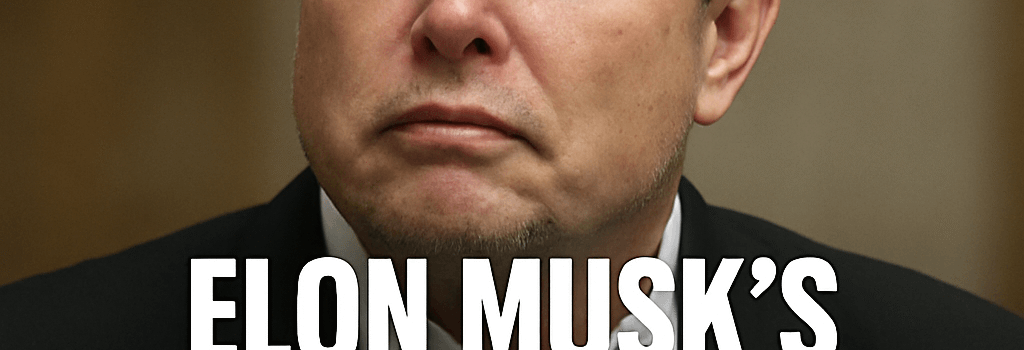Elon Musk’s Government Blitz: A Four-Month Backfire

Executive Summary
Between January and May 2025, Elon Musk led the Department of Government Efficiency (Doge), vowing to eliminate $2 trillion in federal waste. Four months later, he exited with only a fraction of that target met—and substantial reputational and financial fallout for himself and his companies.
Original Objectives and Promises
- Identify $2 trillion in savings across all federal agencies.
- Streamline procurement and cut redundant IT contracts.
- Reduce oversight in industries tied to Musk’s businesses.
- Advocate for deregulation in EV manufacturing, satellite communications, and brain–machine interfaces.
Initial Wins and Industry Impact
- SpaceX: Lawsuit over hiring practices dropped; export controls on Falcon rocket hardware relaxed.
- Starlink: Fast-tracked inclusion in a $42 billion rural broadband initiative; signed roaming pacts in India, Pakistan, Vietnam.
- Neuralink: FDA and NIH probe into surgical protocols delayed by regulatory reprioritization.
- Tesla: Early talks to exempt certain Gigafactory permitting processes in Texas and Nevada.
“Mr. Musk put what was good for the country ahead of what was good for his own bottom line,”
said Rep. Tom Cole (R-OK), House Appropriations Chair.
Technical and Budgetary Analysis
Despite high-level endorsements, rigorous analysis shows that Doge’s real cuts totaled under $5 billion. Most of these savings came from:
- Data Center Consolidation: Migrating 12 legacy .NET and Java EE applications to Kubernetes clusters on AWS GovCloud reduced hosting costs by 18%.
- API Rationalization: Harmonizing 35 redundant RESTful and SOAP endpoints across agencies saved $120 million annually in maintenance.
- Procurement Platform Overhaul: Replacing three separate SAP Ariba instances with a unified open-source procurement framework cut licensing by $70 million.
Reputational and Financial Repercussions
- Tesla Stock: Dropped 45% from its 2024 peak, wiping out over $100 billion in market cap.
- Personal Net Worth: Declined by an estimated $25 billion due to share sell-downs and margin calls.
- Consumer Backlash: 80% of U.S. Tesla buyers are from ‘blue’ districts; survey data indicates a 30% decline in brand favorability among urban EV buyers.
- X Platform: Lost 11 million monthly active users in Europe after controversial policy memos pushed by Musk aides.
- International Contracts: Canada and Mexico paused Starlink rollouts amidst political protest over Musk’s government ties.
Expert Perspectives
“Doge resembled more of a revenge tour than an efficiency drive,” said Dr. Anne-Marie Slaughter, public administration scholar at Princeton. “Cutting aid and oversight alienated key stakeholders without yielding systemic reform.”
“From a cloud-computing standpoint, the API and infrastructure work was solid but negligible compared to the scale of federal IT spend,” noted Raj Patel, former CTO at GSA.
Additional Analysis
Regulatory Oversight and Compliance Risks
While Doge dismantled some watchdog functions, it inadvertently triggered new probes. The SEC launched a review of Tesla’s self-driving Beta feature after Musk’s public comments downplayed safety audits. Likewise, DOT intensified scrutiny on SpaceX’s payload safety protocols, delaying a scheduled CRS resupply mission by four weeks.
Long-Term Tech Stack Implications
The push to migrate agencies to containerized microservices using Docker and Kubernetes could yield savings in 3–5 years, but only if legacy mainframes—still processing 40% of SSA transactions on COBOL—are decommissioned. Congressional approval for a $1 billion modernization fund remains stalled.
AI Integration and Future Opportunities
Sources indicate Musk lobbied for a pilot program using GPT-5 to automate FOIA request triage. Had it launched, the system might have reduced manual review time by 70%. Though the pilot never received final sign-off, the concept has garnered interest from several Senate offices.
Conclusion and Future Outlook
Elon Musk’s Doge tenure delivers a cautionary tale: even with unparalleled access, tech-driven optimization faces entrenched bureaucracy and political risk. With Musk now out of government, attention turns to whether federal IT will leverage his initial reforms or revert to legacy processes. Meanwhile, Musk’s focus may shift back to AI chip development at XAI and SpaceX’s Starship program, where regulatory support remains uncertain.